Fantasy Books
THE DEVILS by Joe Abercrombie
Tor Doubles #4: Samuel R. Delany’s The Star Pit and John Varley’s Tango Charlie and Foxtrot Romeo
 Cover for The Star Pit by Tony Roberts
Cover for The Star Pit by Tony RobertsCover for Tango Charlie and Foxtrot Romeo by David Lee Anderson
Originally published in January 1989, the fourth Tor Double included John Varley’s Tango Charlie and Foxtrot Romeo and Samuel R. Delany’s The Star Pit. Printed in the a tête-bêche format, David Lee Anderson provided the cover by Tango Charlie and Foxtrot Romeo and Tony Roberts was the artist for The Star Pit.
The Star Pit was originally published in Worlds of Tomorrow in February, 1967. It was nominated for the Hugo Award. It lost to Philip José Farmer’s “Riders of the Purple Wage” and Anne McCaffrey’s “Weyr Search,” which tied each other. Coincidentally, McCaffrey and Delany share a birthday.
Vyme, a mechanic at the titular Star Pit, serves as Delany’s narrator. Rather than start with the present day action, however, Vyme opens his narration with memories of his own childhood and his life from several years earlier. Born on the backwater Earth in New York, he talks about his childhood and the ant farm he had as a child, which would eventually break.
He also talks about his life after leaving earth participating in a procreation group, a futuristic group marriage which was meant to make child rearing easier for both parents and children. Mostly talking about his kid-boy Antoni, who had an ecologarium, a sort of ant farm on a larger scale, it is clear that at best, Vyme is an absentee father, using the structure of the procreation group to allow himself to travel off world to take jobs as a mechanic and nursing his alcoholism, which eventually leads to him abandoning his group marriage.
Eventually, Vyme sobers up, but not before he can no longer return to his group family. Instead, he is on a Star Pit, a way station in space which is used to dock and repair spaceships. He is aided in this by Sandy and a young prodigy, Ratlit, who at thirteen has written a novel despite being functionally illiterate. Ratlit also helps out Alegra, a drug-addicted girl two years older than he is.
Vyme, Ratlit, Sandy, and Alegra are living their lives on the Star Pit in a world which has significant space travel, but in order for it to happen, people need to be identified as “the golden,” individuals who can pilot starships and are the only ones who can travel beyond the galactic plane without going insane, although their sanity is in question in any event.
According the Vyme, the golden are stupid and mean and the details of his interactions with them certainly bear that out, as well as a certain pettiness and a parallel society which normal humans can only watch and not fully understand. When one golden kills another in Vyme’s shop, Vyme and Sandy take it in stride. The surviving golden claims ownership of the dead golden’s ship and, not wanting it, hands it over to Sandy.
The plot of The Star Pit, such as it is, is secondary to the characters and their relationships with each other. Despite Vyme’s paternal tendencies toward Ratlit and his mentoring of Sandy, or Ratlit taking care of Alegra and making sure she is being treated for her illnesses, none of the characters seem to particularly like each other. They have been thrown together by circumstances and deal with each other as best that can.
While Vyme presents his background at the beginning of the novella, the other characters’ stories are only slowly revealed, and, while Vyme is not necessarily an unreliable narrator, the explanation for Sandy, Ratlit, Alegra, and, eventually the young golden Androcles, are all viewed through Vyme’s point of view. When Androcles show sup looking for a job, it is clear that Vyme sees him, at least in part, as a surrogate for his own long lost son, Antoni.
There is a certain disjointedness to The Star Pit, perhaps representing the fact that Vyme is not entirely comfortable with his own position and the difficult relationships he has with Sandy and Ratlit, one of whom appears to represent his own failures and the other of whom represents the possibilities a young Vyme drank away and squandered.
The Star Pit postulates a galaxy in which humans have spread, but its tight focus makes the galaxy feel like a very small place. While the golden have the ability to travel, most humans are limited as to where they can go, which is a response and reaction to all the stories of galactic empires and humanity expanding throughout the galaxy and universe.
Rich Horton discussed The Star Pit in the essay “An Evocation of the Science Fiction Dream of Exploration: ‘The Star Pit’ by Samuel R. Delany” in Black Gate in December 2020.
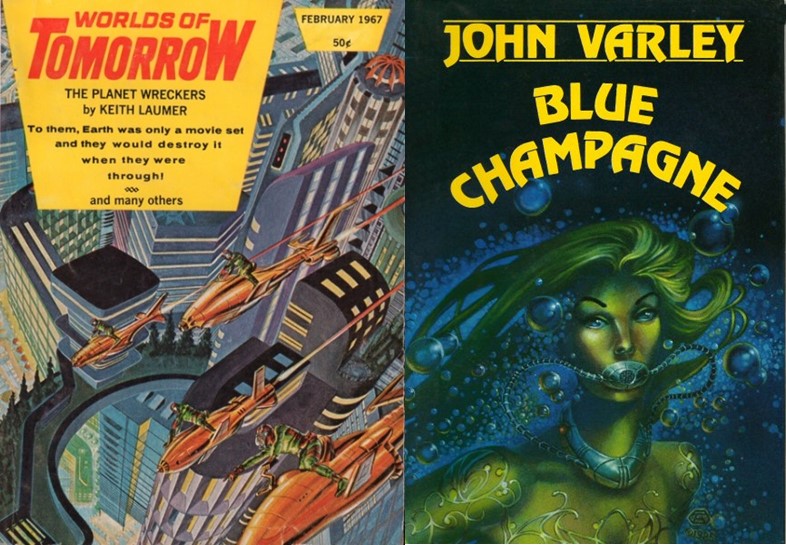 Worlds of Tomorrow 2/67 cover by Gray Morrow
Worlds of Tomorrow 2/67 cover by Gray MorrowBlue Champaign cover by Todd Cameron Hamilton
Tango Charlie and Foxtrot Romeo was originally published in the John Varley collection Blue Champagne by Dark Harvest Press in January, 1986. It won the Seiun Award in 1992.
Tango Charlie and Foxtrot Romeo was originally published in the John Varley collection Blue Champagne by Dark Harvest Press in January, 1986. It won the Seiun Award in 1992.
Like The Star Pit, Tango Charlie and Foxtrot Romeo takes place on an outpost, although it isn’t as distant as the one in Delany’s story. Instead, Varley’s focus is on a space station in orbit around Earth’s moon and the story opens with the remains of a dead dog being expelled through the station’s airlock, which is noted by a satellite which in stationed to track anything that comes out of the space station.
It turns out that the space station had been struck by a virus, Neuro X, thirty years earlier and quarantined. The expulsion of the dog is the first indication the Lunarians have that there is anything still alive on the space station. Varley story follows Anna-Louise Bach, a recruit/apprentice at the New Dresden Police Department on the moon and Charlie, a young girl who is living alone on the space station in the company of dozens of dogs.
The first half of the story deals with an assessment of the situation, Bach trying to figure out how to make contact with whoever might still be living on the space station and Charlie living her life surrounded by dogs and the station’s computer Tik-Tok, and becoming aware that someone is trying to contact her from the outside world. Eventually, contact is made and a resolution to the situation must be found. That resolution is made more difficult by information that Varley slowly reveals.
In the space of the novella, Varley creates three different societies to various degrees. The most obvious ones are the simple society that surrounds Charlie on the space station, with her interactions with the dogs, the chores that she must do, and the way she comes to terms with growing up. The second is the Lunarian society, which is clearly separate from that of Earth, beginning with fashion, but continuing to attitudes. Finally, Terrestrial culture is represented by Bach’s acquaintance Megan Galloway. Galloway is a celebrity on Earth who has a history that involves Bach. They don’t like each other, but find the can use each other to achieve their ends.
The nature of the story, following Charlie and her dogs and switching to follow Bach, means that Varley is essentially writing two intertwined stories. Charlie’s story is one of someone living on an abandoned space station, content and understanding of her world, until outside forces intrude and try to force their way of thinking on her. In many ways, Charlie is an alien race that the humans of Luna are attempting to colonize, although they wouldn’t see it that way.
The humans on Luna see themselves trying to understand the fate of a failed human colony on the Tango Charlie space station. The know that the disease that eradicated the station’s population could cause a deadly pandemic on the moon or Earth if it were released. At the same time, they have discovered that Charlie (and the dogs) have somehow managed to survive it and could offer hope for humanity if they could be studied. Unfortunately, the security system in place to make sure no contaminants escape the space station make it difficult to explore those possibilities.
As the novella progresses, Varley hints that something about Charlie may provide clues to either immortality or the impeding of aging. He also offers information about the nature of the Neuro X virus and the future of Tango Charlie, the space station upon which Charlie is resident. Some of the ideas Varley offers up in the story are seen to fruition while others are abandoned, leaving the story feeling a little unresolved, even as Varley does offer a resolution to most of his plot points. This also means that Tango Charlie and Foxtrot Romeo feels like it is part of a larger world.
 Steven H Silver is a twenty-time Hugo Award nominee and was the publisher of the Hugo-nominated fanzine Argentus as well as the editor and publisher of ISFiC Press for eight years. He has also edited books for DAW, NESFA Press, and ZNB. His most recent anthology is Alternate Peace and his novel After Hastings was published in 2020. Steven has chaired the first Midwest Construction, Windycon three times, and the SFWA Nebula Conference numerous times. He was programming chair for Chicon 2000 and Vice Chair of Chicon 7.
Steven H Silver is a twenty-time Hugo Award nominee and was the publisher of the Hugo-nominated fanzine Argentus as well as the editor and publisher of ISFiC Press for eight years. He has also edited books for DAW, NESFA Press, and ZNB. His most recent anthology is Alternate Peace and his novel After Hastings was published in 2020. Steven has chaired the first Midwest Construction, Windycon three times, and the SFWA Nebula Conference numerous times. He was programming chair for Chicon 2000 and Vice Chair of Chicon 7.
Five Gifts for the Blacksmith's Wife - Book Review by Voodoo Bride
 Five Gifts for the Blacksmith's Wifeby Lyonne Riley
Five Gifts for the Blacksmith's Wifeby Lyonne RileyWhat is it about:When her village faces a winter of starvation, Sita draws the shortest straw. Now she’s to be given to the orcs across the river in exchange for food and supplies so her family can survive. Given the chance to choose her own husband from among the eligible orc bachelors, she selects Gurrek, the reluctant blacksmith, who clearly doesn’t want her. He’s the safest option.
Gurrek has always wanted a wife of his own, but not like this. Now he’s saddled with a human woman who needs new shoes, new clothes, and can’t even speak his language. He wants nothing to do with her, and yet her sweet, strong personality draws him in closer with every passing day.
As Sita and Gurrek try to find a place to fit within each other’s lives, attraction begins to bloom between them. But Gurrek refuses to touch a woman who never wanted to be his in the first place. Can Sita break through the blacksmith’s high walls to become his true wife, mind, body, and soul?
This is a sweet, cozy, steamy orc romance that features an arranged marriage, a grumpy/sunshine dynamic, a slow burn, a virgin sexual encounter, and a winter holiday vibe. Please check the content warnings on the author's website.
What did Voodoo Bride think of it:I read a Romance with Orcs that turned out to be Urban Fantasy, and although I really liked it, I wanted to read a Fantasy Romance with Orcs. So I tracked this one down, as I love the grumpy/sunshine trope.
And this turned out to be a nice read.
I really loved Gurrek and rooted for him to get a Happily Ever After. I had a bit more trouble with Sita. At times she felt... too young. I mean: she's adult in years of course, but in her behavior she sometimes felt like a child to me. Maybe it's me and I'm getting old, but because of how she felt to me I had a hard time believing in their romance.
Still, the writing was nice, Gurrek a grumpy sweetheart, and I enjoyed the read.
I might try another one of Riley's books.
Why should you read it:Grumpy Orc!
Goth Chick News: Spirit Halloween Levels Up with Haunted: Halloween ’86 – Spirit Edition
 Haunted Halloween ’86 from Spirit Halloween
Haunted Halloween ’86 from Spirit Halloween
The only thing I like better than blowing a whole day playing video games, is playing retro video games. Of course I love movie-quality HD graphics, but little pixelated Lego-people give me a case of the warm fuzzies. I did some digging and discovered I’m far from alone. The global retro gaming market has experienced significant growth in recent years. For instance, the NES Classic Edition sold 2.3 million units in less than a year, and the SNES Classic Edition surpassed 5 million units globally. The Sega Genesis Mini also exceeded 1 million units sold worldwide in its first year. Additionally, the arcade gaming sector, closely tied to retro gaming, was valued at $19.0 billion in 2023.
But when I think of one of my favorite retailers crossing over into retro-gaming, I most definitely get the fan girl squees.
Spirit Halloween, the annual haunt-headquarters that pops up every fall in the unused strip mall space near you, has just announced Haunted: Halloween ’86 – Spirit Edition, a pixelated plunge into Halloween nostalgia brought to you by Retrotainment Games.
Set in the cursed town of Possum Hollow, Haunted: Halloween ’86 is the lovechild of old-school beat-’em-ups and platforming games. You’ll tag-team as Donny and Tami, two tweens armed with fists, feet, and some serious determination to save their town from ghoulish doom. The Spirit Edition adds an additional storyline that brings the action from 1986 into 2025. Two modern-day characters don costumes at Spirit Halloween and are magically transported to 1986 by none other than Jack the Reaper himself.
Yes indeed, it is as delightfully weird as it sounds.
For $59.99, the Spirit Edition comes with a custom NES cartridge, a retro-style game box, and a user manual (because no one remembers how to work an NES anymore).
Not rocking an NES? No problem. Haunted: Halloween ’86 is also available digitally on the Nintendo Switch, Xbox One, and Steam. These versions deliver the same 8-bit thrills without the struggle of blowing dust out of your console.
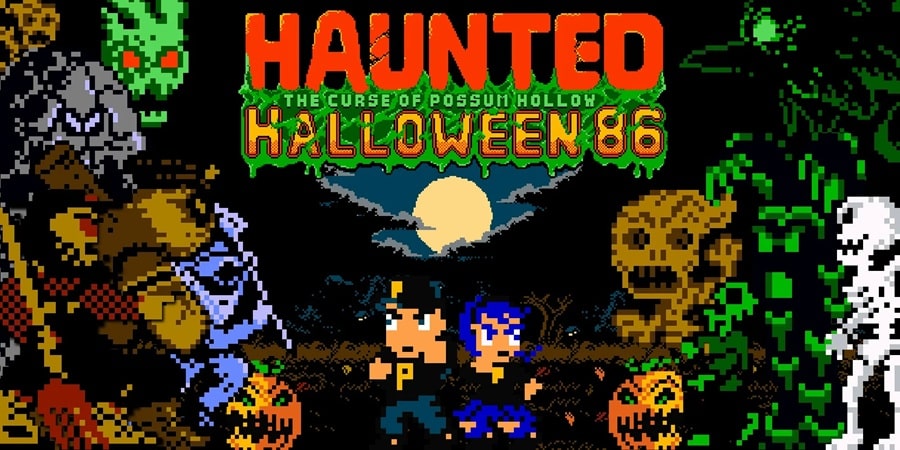 Haunted Halloween ’86
Haunted Halloween ’86
Call me naive, but I honestly believe this isn’t just a nostalgic cash grab. Retrotainment Games built Haunted: Halloween ’86 using authentic 6502 Assembly language, sticking to NES hardware specs. The game serves up modern mechanics like combo moves, upgradeable power-ups, and physics-based momentum. Add seven sprawling levels and some gnarly bosses, and you’ve got a treat worth trading all your Halloween candy for. Digital formats are coming this summer, with no specific release date announced as of now. But if you’re after the collectable cartridges those come directly from Spirit at their website and they literally sold out in a couple of hours. Restocks are coming, but no date on that yet either.
Looks like we all really love the retro experience.
COVER REVEAL: Only A Grave Will Do (Malitu trilogy #3) by James Llyod Dulin

Official Author WebsitePre-order Only A Grave Will Do over HEREAdd Only A Grave Will Do on Goodreads
Today we have super thrilled to be part of the cover reveal for the last book of the Malitu trilogy by James Lloyd Dulin,
Feast your eyes on the gorgeous cover for ONLY A GRAVE WILL DO by artist Martin Mottet, the book released on June 24th 2025 and you can checkout the blurb below:

OFFICIAL BLURB: On the march towards war, blood is both a promise and a gamble.
Newly dubbed the Hero of Anilace, Kaylo is thrust into leading a rebellion against insurmountable odds. His people are dying, if not in labor camps, in occupied cities as everything that makes them Ennean is stripped away. In two generations, the Great Spirits will be legends and Ennea will be yet another conquered territory. People look to Kaylo and the myth growing around him to stem the rising tide.
Sixteen years later, a trivial rebellion, a reclusive nation, and a vast empire march towards a battle to decide the fate of Ennea and her people. The actions of the small folk go unseen. Those who want to serve; those who have given up; those imprisoned; those who will fight at any cost; and those who will protect the people they love with every breath will tip the scales. Ennea is not done fighting.

Isn't it gorgeous?
There will also be a blog tour for the book release and you can check out all the details in the graphic below

Spotlight on Gourmet “Aftertaste” by Daria Lavelle
What if you could have one last meal with someone you’ve loved, someone you’ve lost?…
The post Spotlight on Gourmet “Aftertaste” by Daria Lavelle appeared first on LitStack.
On McPig's Wishlist - Illuminations
 Illuminationsby T. Kingfisher
Illuminationsby T. KingfisherRosa Mandolini knows in her heart that her family are the greatest painters of magical illuminations in the city. But the eccentric Studio Mandolini has fallen on hard times and the future is no longer certain.
While trying to help her family, Rosa discovers a strange magical box protected by a painted crow. But when she finds a way to open the box, she accidentally releases the Scarling, a vicious monster determined to destroy the Mandolini family at any cost.
With the aid of her former best friend and a painted crow named Payne, it’s up to Rosa to stop the Scarling before it unmakes the magical paintings that keep the city running, and hopefully save her family in the process!
Rapture
Emily Maguire’s new novel, Rapture, takes as its inspiration the legend of Pope Joan, reworking key elements of the myth to create a brilliant work of great power and beauty.
The story starts in 9th-century Mainz, Germany, where Agnes lives with her father, an English priest. Although his vows include celibacy, Agnes’s father has slept with a local Saxon woman, but her death in childbirth has left him with the responsibility of raising his daughter. Unusually for that time, Agnes is given an education, listening to the intellectual debates at her father’s dinner table. At one of these dinners, she meets Brother Randulf, a monk from Fulda Abbey, and thus begins their relationship. After her father’s untimely death, Randulf agrees to help Agnes disguise herself as a man to become a Benedictine monk. As Brother John, Agnes starts down the path that will lead her to becoming the head of the Roman Catholic church.
There is so much that is compelling about this novel. The writing is absolutely beautiful and often poetic in its intensity. Characterisation is intimate and believable, and Agnes’s perspective gives us a close insight into her views and feelings. The power of the novel lies in this range: Agnes is a person of huge intellect, but it is also her journey to womanhood, something that she initially represses, that becomes a key focus – with tragic consequences. The novel always bears its research lightly; we see the often-conflicted world of the monasteries, alongside the disintegration of the Carolingian dynasty after the death of Charlemagne and the terrible consequences of the ensuing civil war. Maguire depicts some horrific moments with artistic sensitivity and, as much as violence is a part of this world, its inclusion is never gratuitous.
This is a fabulous book for any serious reader of literary historical fiction. Very highly recommended.
The post Rapture appeared first on Historical Novel Society.
State of Emergency
Singapore, 1963. What can you say about a young woman, Siew Li, who walked away, without warning, from her twin children and husband? Jeremy Tiang says a lot as he weaves an always gripping and mostly grim story of people caught up in the long conflict between the forces of the right and left.
That the right won and steered Singapore through a rapid and rare transformation from third world to first is well-known. The story of the communist insurgence in Singapore and Malaysia has faded from public memory, despite works such as Anthony Burgess’s Malayan Trilogy and Yeng Pway Ngon’s Unrest. State of Emergency is a rich addition to this meagre literature.
Told from multiple viewpoints, linked stories connect small, human acts and place them against a larger narrative of ordinary people trapped in times when torture, murder, and massacre are condoned. From the opening scene, the historical MacDonald House bombing, to a fictional end in which Siew Li’s son gets as close to her as he ever will, this is a remarkable blend of the sweep of history and the minutiae of people’s lives.
There is a version of history which peddles the idea that the American invasion of Vietnam could have learned much from the more successful British-led intervention in Malaya. The survivors of Batang Kali (one of whom becomes a narrator for a while) would, of course, disagree. This novel gives them – and the dead – a voice.
I was left wanting to know much more about Siew Li than the author has revealed, even though she tells the story for some stints. There are surprising bloopers about the time zone in Thailand and a jungle being silent at night. On the balance, these are immaterial defects in this great work of historical fiction.
The post State of Emergency appeared first on Historical Novel Society.
Women in SF&F Month 2025: Thank You and Links
Thank you so very much to all of this year’s guests for the excellent essays that made April 2025 another amazing Women in SF&F Month! And thank you to everyone who shared their posts and helped spread the word about this year’s series. It is always very much appreciated! This year’s series has ended, but I wanted to make sure there was a way to find all of the guest posts from 2025. This was the fourteenth annual Women in […]
The post Women in SF&F Month 2025: Thank You and Links first appeared on Fantasy Cafe.7 Author Shoutouts | Authors We Love To Recommend
Here are 7 Author Shoutouts for this week. Find your favorite author or discover an…
The post 7 Author Shoutouts | Authors We Love To Recommend appeared first on LitStack.
Odd Old Indie: Night Tide
Growing up in Southern California in the 60’s and 70’s was a movie lover’s dream. Late night and weekend television in those days was almost completely given over to old movies, especially on the Los Angeles independent channels: KTLA channel 5, KHJ channel 9, KTTV channel 11, and KCOP channel 13.
The independent stations were especially prone to showing independent movies, small films that hadn’t cost much and hadn’t made much and could be acquired cheaply to occupy all the time that had to be filled until sign-off and the test pattern. Many of these movies were from the House of Corman (The Little Shop of Horrors, The Masque of the Red Death, Dementia 13), but most weren’t, and any night of the week you could watch a pulse-pounder like The Flesh Eaters, The Incredibly Strange Creatures Who Stopped Living and Became Mixed-Up Zombies, or Beast of Blood (once you had advanced — or descended — to Filipino horror movies you could consider yourself a schlock PHD.)
Most of these films were awful, of course (that’s how you wound up on channel 13 at two in the morning), but sometimes a (relative) diamond could be found among the ashes. One movie that I discovered during those years was Night Tide, an odd little indie that aimed a bit higher than the usual cheapie thriller. I was always happy when it popped up in the week’s TV Guide listings.
Made in 1960 and first screened in 1961, but not widely released until 1963 due to distribution confusion (it has a Corman connection after all, because it was released through Filmgroup, his distribution company) and directed by Curtis Harrington, it’s an offbeat film that has all of the expected deficiencies of a micro-budget independent movie along with some unexpected virtues. (It was supposedly made for $25,000, which wouldn’t even cover George Clooney’s carfare today.)
Clearly taking his inspiration from the series of nine horror films that Val Lewton produced for RKO in the 1940’s (Night Tide owes most to the first of them, 1942’s Cat People), Harrington (who wrote the script as well as directed) tells an ambiguous, poetic, melancholy story in an allusive, indirect way. Making a virtue of poverty, Harrington allows the viewer to fill in everything that is only suggested (because it would cost too much to show it), which was very much the strategy Lewton followed in making his underfinanced gems.
Night Tide is the story of a USN sailor, Johnny Drake (a twenty-five-year-old Dennis Hopper in his first lead role) and Mora (Linda Lawson), a young woman who appears as a mermaid in a boardwalk sideshow. (Most of the movie was shot just west of Los Angeles in Santa Monica.)
Strolling along a beachfront street one night, Johnny drops into a jazz club where he sees Mora sitting alone, raptly listening to the music. Struck by her dark beauty, Johnny asks if he can sit at her table to get a better view of the players. Mora agrees, but brushes aside the sailor’s attempts at conversation. While they are sitting there, a strange, black-clad, intense-looking woman comes up and speaks to Mora in a foreign language. The woman walks away, and Mora, visibly upset, rushes out of the club.
Johnny, desperate to make some kind of connection with this intriguing woman, follows Mora down the darkened street, all the while trying to persuade her to talk with him. Perhaps sensing a loneliness equal to her own and touched by his sincerity, Mora permits Johnny to walk her to her home above a carousel. She rebuffs his request to come upstairs with her, but she permits him to clumsily kiss her goodnight, and leaves him with an invitation to come back in the morning, when she will fix him breakfast.
When Johnny returns the next day, he first takes a look at the merry-go-round under Mora’s apartment, where he meets the ride’s operator and his granddaughter Ellen (Luana Anders), who both respond a little oddly when they hear that he’s there to visit the sideshow mermaid.
When Johnny goes upstairs, Mora greets him warmly and leads him through an apartment decorated with souvenirs of the sea, to a balcony overlooking the ocean, where they will have their breakfast. (Seafood, naturally.) During their conversation, the sailor and the enigmatic young woman shyly begin to get better acquainted.
Mora tells him about her job — “I wear an artificial fishtail and I lie in a tank that looks like it’s filled with water, and people pay twenty-five cents and come and look at me, and that’s how I make my living.” When Johnny asks her if she ever gets tired of it, she wistfully replies, “Sometimes — but it’s restful, anyway.”
When Mora asks Johnny to tell her something about his life, he tells her that he is alone in the world; his father left home when Johnny was just a boy, and when his mother died, he thought that the best way to get away from Denver, Colorado was to join the navy and see the world. “But I haven’t seen any of it yet.”
Then, as they are finishing their meal, an odd thing happens. A scavenging seagull swoops down on the table looking for scraps, and Mora takes it in her arms and gently strokes it and talks to it, and the wild creature seems perfectly calm and content. When Johnny asks her where she learned to do such a thing, Mora says that she doesn’t remember.
After their breakfast is done, they go down to the boardwalk and Johnny meets the man who owns the mermaid attraction and serves as its barker, Captain Samuel Murdock (Gavin Muir). He found Mora when she was a child on the Greek island of Mykonos, and brought the orphaned girl back to the United States as his ward. Murdock tells Johnny to drop by his house sometime; he will tell him some interesting things about his adoptive child.
Soon Johnny is spending every liberty with Mora, and even as they grow closer, the young sailor’s disquiet also grows, as he hears some strange things about his new girlfriend. Ellen (who is clearly attracted to Johnny) and others tell him that two young men who had grown close to Mora drowned in mysterious circumstances; the police are still investigating the deaths.
And one night on the beach, where people have gathered for a party, a curious thing occurs. A musician plays the bongo drums, and Mora begins to dance on the sand; as her movements grow wilder and more ecstatic, she looks toward the ocean and sees, standing silently there, watching her, the black-garbed woman who spoke to her in the jazz club. Johnny sees her too. Mora collapses in a swoon, and when Johnny rushes to her to see if she’s alright he looks around for the woman, but she is gone. The woman vanished n the few seconds it took him to get to Mora.
Increasingly worried, Johnny decides to visit Captain Murdock at his home in cement-canaled Venice, and as he nears the house, he sees the woman again. He pursues her, but she evades him in the maze of canals and bridges. When he arrives at the house, the captain gives him an effusive welcome, but soon adds to Johnny’s unease by telling him that he is in grave danger as long as he continues to see Mora, that the gentle-seeming girl might feel “compelled” to kill him. Before he passes out from drink, Murdock tells the disbelieving sailor that Mora is a siren, a member of the ancient race of sea people who lure men to their doom.
When Johnny tells Mora the captain’s story, she tells him that it’s true — “They are waiting for me to join them.” She believes that the strange woman who is following her is one of the sea people, “here to remind me of the time I must go to them in the sea.” Johnny’s scoffing at this absurd tale can neither shake Mora’s belief in her alien nature and her dark fate, or silence his own growing anxiety.
Visiting Mora after she finishes work one day, Johnny falls asleep on the couch while she takes a shower. He dreams that a towel-wrapped Mora walks out and sits by him on the couch, and looking down, he sees that her legs have turned into a fish’s tail; she is truly a mermaid, a creature not fully human. She leans over and begins to kiss him, and suddenly it is not the arms of a beautiful young woman that enfold him — he is entangled in the grotesque tentacles of a huge octopus, strangling him, devouring him. (This terrifying episode is probably Night Tide’s best-remembered scene.)
When Johnny awakens from this nightmare, he calls out to Mora but receives no answer. She has disappeared. Johnny follows her wet footprints out of the apartment and down to the beach. After frantically searching he finally finds her clinging to the pilings under the pier, barely holding on as she is battered by the waves of the incoming tide. As he carries her back to her apartment, she tells him that the sea people were calling her to them.
The next morning, Mora is strangely calm and later, after telling Johnny that the tides will be perfect (because the moon is full), she urges him to go diving with her at special place that she knows. (A few days earlier Johnny had visited a boardwalk Tarot reader who made ominous hints about his future due to the placement of the Moon card.) Johnny uneasily tries to convince Mora that a dive isn’t a good idea, but, unable to dampen her puzzling enthusiasm, he finally agrees.
Taking out a small boat, they make their dive (after Mora cautions the visibly nervous sailor to stay very close to her), and when they’ve gone down to the deepest point, Mora gets behind Johnny and cuts his air hose. As he desperately fights his way back to the surface, he looks back and sees Mora swimming away into the darkness. After waiting in the boat until long after her air would have run out, Johnny takes the boat to shore and stumbles back to Mora’s apartment, where he falls into an exhausted, troubled sleep.
There he has one last dream of this strange, ill-fated young woman — he sees her as a mermaid, sitting on the rocks with the waves crashing about her, an unreadable expression on her face as she regards herself in a mirror. When Mora turns and sees him, she slips into the churning water. Johnny reaches out and takes her hand, trying to pull her back up onto land, but he is not strong enough to overcome the immense power of the ocean’s pull, and a laughing Mora finally slips away from him and vanishes beneath the surface of the sea.
Later that rainy night, he wakes from this sleep, shaken and desolate, and walks to the boardwalk. Going into the mermaid exhibit, Johnny hesitantly looks into Mora’s tank, where he is stunned to see the body of the drowned girl floating face-up in the water, her hair streaming around her. She is still beautiful, even in death.
Captain Murdock (who found Mora’s body on the beach) emerges from the shadows with a gun in his hand and accuses Johnny of killing her, which the young man denies — “But I loved her.” “You loved her! What do you know about love?” Murdock replies. “I’ve loved her ever since she was a child. You did it and you must pay for it!” Murdock fires at Johnny but misses, and the shots bring the police, who take both men into custody.
At the police station a distraught Murdock makes a confession to a detective (and to Johnny — he asked that the sailor be present). When she was still a child, he began telling Mora that she was one of the sea people in the hope that it would keep her from forming close relationships with anyone else, and so prevent her from ever leaving him. Ultimately, even that didn’t keep Mora from wanting something more, and the captain killed her two boyfriends and made his ward believe that her inhuman nature was somehow responsible for their deaths; he just couldn’t bear the thought of losing the only person in the world he loved, the only person in the world who loved him.
Murdock’s “experiment in psychology” worked only too well; Mora “couldn’t face a recurrence of what had gone before, so rather than destroy the person she loved, she decided to embrace the rapture of the depths.”
The only thing left to clear up is the identity of the mysterious woman — was she an accomplice of Murdock, someone he had paid to follow Mora to remind her of her supposed evil destiny? The broken old man has never seen such a woman, never heard of her. She was part of no plan of his.
When Murdock is led out of the detective’s office, he gently pats Johnny on the shoulder, a sad little gesture between two men who will forever be linked by the loss of the woman they both immoderately loved.
The shore patrol arrives to take Johnny back to his ship, and Ellen is waiting at the desk to express her sympathy and to say goodbye. Maybe on his next liberty, Johnny can come by and take a ride on the carousel? The sailor smiles hesitantly and says that it seems like a good idea. As he walks out of the police station, the rain has ended, and a new day is dawning.
 Gavin Muir and Curtis Harrington
Gavin Muir and Curtis Harrington
The film closes with the lines from Poe’s “Annabel Lee” that gave it its title: “And so, all the night-tide, I lie down by the side / Of my darling — my darling — my life and my bride, / In her sepulchre there by the sea — / In her tomb by the surrounding sea.”
So, what do we have here? Is Night Tide a brilliant achievement, a neglected masterpiece? You can judge for yourself (there’s a very nice print on YouTube, though there wasn’t several years ago when I bought my Kino Lorber Blu-ray), but it’s not necessary to go quite that far.
You don’t have to look very hard to find Night Tide’s defects. The story, as I said before (and as Harrington always acknowledged) borrows heavily from Cat People, which is a better, more original film, and even if you’re not familiar with the earlier movie, it’s not too difficult to see where the story is going (Captain Murdock’s big revelation isn’t much of a surprise); the dialogue is sometimes stilted, both in the writing and in the delivery by the actors, some of the supporting playing is erratic, and the mark of the low budget is visually evident in dozens of ways.
But many of these failings have a positive aspect, too. If you’re going to pick a model, Cat People is a strong one, and many of its virtues are evident in its successor, while the low budget compelled Harrington to stick to the commonplace in costumes and sets, giving the movie a much-needed grounding in everyday reality (while also permitting the director to concentrate on character rather than on special effects). Despite a few overtly arty touches, the black-and-white cinematography (much of which was shot at night), strongly conveys the darkness and moody ambiguity of the story. (The film’s flute-heavy jazz score by David Raskin is both a plus and a minus; sometimes it’s delicate, eerie, and just about perfect, while at other times it’s discordantly, distractingly obtrusive.)
Perhaps the film’s greatest assets are Dennis Hopper and Linda Lawson. Both were experienced television actors in 1960, but Night Tide was the first movie lead for both of them, and the awkwardness and uncertainty that are sometimes detectable in their performances actually suit their characters very well. Hopper is convincingly shy and callow (a “fair young man, innocent and searching” as the Tarot reader calls him); his yearning for human contact comes across as touchingly genuine. (At the beginning of the movie, Johnny has some pictures taken in an automated photo booth; he puts his hat on, takes it off, smiles, looks serious… and then tucks the pictures into his pocket and walks away. He has no one to give them to.)
Linda Lawson, despite not being gifted with a very expressive voice, nicely coveys a loneliness and a consciousness of being separated from “normal” people that matches Johnny’s intense desire to connect with someone; she makes the lost, doomed Mora a moving, tragic figure.
Night Tide uses its limited resources to try for something different than the usual rubber-monster-on-the-loose quickie; it’s a mood piece in which feeling and atmosphere are more important than plot, a poetic, offbeat combination of fantasy and horror and mystery, wrapped around an ill-starred, very human love story. In some ways it’s almost an amateur film, but it’s none the worse for that. (Remember that one meaning of amateur is someone who does something just for the love of it.) The movie has a unique flavor, sweet and sad, and for all of its (understandable and forgivable) deficiencies, it lingers in the mind; it gets under your skin.
You can always recognize a film that was truly important to the people who made it, and Night Tide is one of those; clearly, it wasn’t just another job to Curtis Harrington, Dennis Hopper, Linda Lawson, and the rest of the people who worked on it — it meant something to them. If you give it a chance — say late some lonely night — you might find that this old, odd little movie has come to mean something to you, too.
Thomas Parker is a native Southern Californian and a lifelong science fiction, fantasy, and mystery fan. When not corrupting the next generation as a fourth grade teacher, he collects Roger Corman movies, Silver Age comic books, Ace doubles, and despairing looks from his wife. His last article for us was The Eccentric’s Bookshelf: Michael Weldon’s Psychotronic Encyclopedia of Film
The Baby Dragon Café - Book Review by Voodoo Bride
 The Baby Dragon Café (The Baby Dragon #1)by A.T. Qureshi
The Baby Dragon Café (The Baby Dragon #1)by A.T. QureshiWhat is it about:When Saphira opened up her café for baby dragons and their humans, she wasn’t expecting it to be so difficult to keep the fires burning. It turns out, young dragons are not the best magical animals to keep in a café, and replacing all that burnt furniture is costing Saphira more than she can afford from selling dragon-roasted coffee.
Aiden is a local gardener, and local heart-throb, more interested in his plants than actually spending time with his disobedient baby dragon. When Aiden walks into Saphira’s café, he has a genius idea – he'll ask Saphira to train his baby dragon, and he'll pay her enough to keep the café afloat.
Saphira’s happy-go-lucky attitude doesn’t seem to do anything but irritate the grumpy-but-gorgeous Aiden, except that everywhere she goes, she finds him there. But can this dragon café owner turn her fortunes around, and maybe find love along the way?
What did Voodoo Bride think of it:This could have been more than it was.
Don't get me wrong:I liked the romance. Once again it was grumpy/sunshine, and I really liked the grumpy Aiden. He's more of an introvert than actually grumpy, I have to say. I totally read this book start to finish to see him get the girl and happiness.
It was the world building and the dragons that didn't vibe for me. I felt like the author didn't really know if the dragons were pets or beings that had similar intelligence as humans. The baby dragons felt really off because of that. I also thought the café wasn't used enough in the story. It was more a starting point than something the book revolved around.
The writing style was nice enough, but didn't draw me in. I was not bored enough to stop reading, and not entertained enough to glue myself to the book.
All in all a nice enough read, but I won't be reading other books in this series/world.
Why should you read it:Grumpy, introverted gardener.
Book Review: When the Wolf Comes Home by Nat Cassidy
I received a review copy from the publisher. This does not affect the contents of my review and all opinions are my own.
 When the Wolf Comes Home by Nat Cassidy
When the Wolf Comes Home by Nat Cassidy
Mogsy’s Rating: 4.5 of 5 stars
Genre: Horror
Series: Stand Alone
Publisher: Tor Nightfire (April 22, 2025)
Length: 304 pages
Author Information: Website
I have to admit, the first time I read Nat Cassidy with Nestlings, my feelings were mixed. But boy, am I glad I gave his work another chance, because When the Wolf Comes Home was a trip that went straight for the jugular. It’s horror that masks itself as a traditional werewolf tale, but what you’ll find instead is a raw and emotionally charged story that goes much deeper than that.
Plot-wise, the story follows a young Los Angeles woman named Jessa Bailey who has reached a dead-end in her acting career and is currently trying to make ends meet by working at a dingy diner. After experiencing a traumatic health scare, she makes her way back home feeling anxious and dazed, only to have her night turned upside down a second time when she discovers a terrified little boy hiding in the bushes outside her apartment. After getting him inside and squared away some clothes and food, she gets his story—or most of it, anyway, before they are attacked by a monster. The beast, which looks half man and half wolf, proceeds to tear through the building and kill many of its residents, and Jess and her new charge only barely manage to escape.
It soon becomes clear that the monster is hunting the boy, but that’s not all that’s coming after them. Certain elements in the government are also interested in getting their hands on him, and a Special Agent named Michael Santos has been tasked to track him down on behalf of a secret organization. Jess has no idea why so many people are desperate to find the boy, but the longer she spends with him, the more she realizes he’s special. Strange and uncanny things seem to happen around him, which Jess finds disturbing and hard to believe. However, once she is named as a person of interest in the attack on her apartment, their fates become intertwined. With no one else to turn to, Jess becomes the boy’s protector and his only chance of survival.
When the Wolf Comes Home is the kind of novel that would translate well to the big screen, with cinematic writing that moves at a fast clip and a story with plenty of action and just the right amount of emotional resonance. But while a film adaptation of this book would undoubtedly be a horror movie, simply because of all the gore and terror, I also think it would be a lot more complicated. As the plot progresses, the surface peels back to reveal several layers of meaning. Our protagonist Jess is deeply flawed and unsure of herself, still feeling raw from the pain of losing her estranged father whom she’s never forgiven for abandoning her. The story’s themes hit hard when you realize the monster chasing her is more than a creature of folklore.
There’s also a surreal quality here that I wasn’t sure what to make of, initially. There were certainly scenes that bordered on sheer absurdity, and I confess, when the first of these scenes hit, my regard for the novel dropped considerably. But this was before I realized how integral these moments were to the big picture. Without spoiling anything, these distortions to reality are directly related to the mystery surrounding the boy and the ideas underpinning the entire story. I couldn’t possibly hold the surrealism against the book after that and even started to enjoy these moments when they added a spot of humor to an otherwise bleak premise.
And truly, most of this book is dark. Sometimes it gets too dark, and you wonder how much more our characters can afford to lose and still manage to keep their hope and sanity. There’s a heaviness that borders on exhausting, and so perhaps it is not surprising that my main complaint lies in the ending. At times, when I’m feeling generous, I think to myself that there’s no other way things could have played out. But when I’m in a more critical mood, I feel like the pacing was all wrong. If nothing else, the novel probably should have ended soon after the climax and not have such a long denouement.
Still, When the Wolf Comes Home is a fantastic read, and a standout in horror fiction. In fact, it easily ranks as one of the most memorable horror novels I’ve read in recent years. When you pick up the book, look at its cover and read its title, you’d be forgiven for thinking this is just another werewolf story. I know that’s what I thought at first. But instead, what Nat Cassidy has delivered here is entirely his own: a wild and weird blend of tension, chills, and heartbreak. It simply works.
![]()
![]()
Swordfights, Mysteries, and Dark Sorcery: Solomon Kane: The Serpent Ring #1 by Patrick Zircher
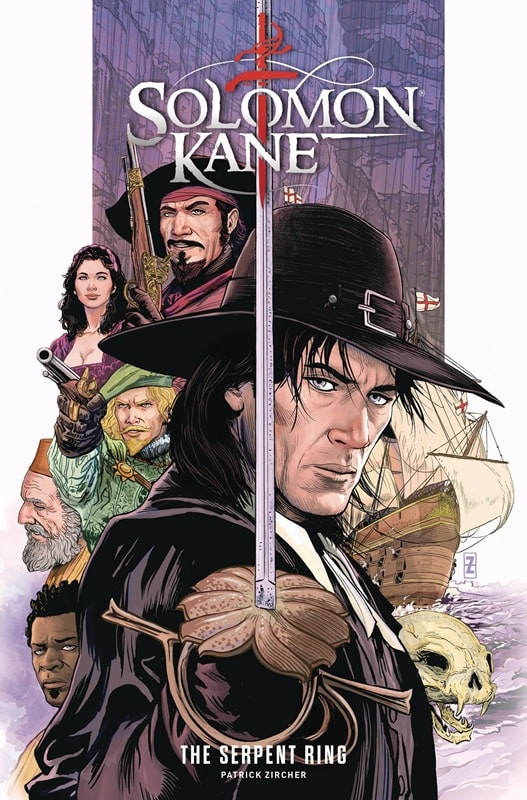
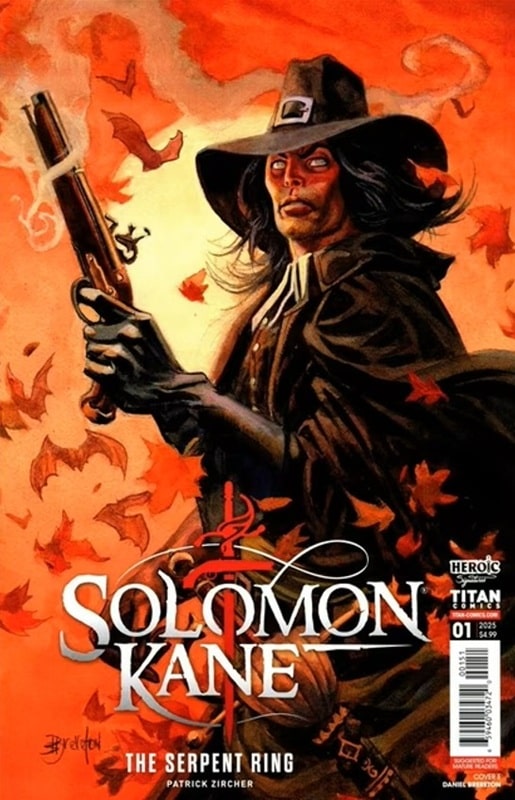
Solomon Kane: The Serpent Ring #1, and variant cover by Daniel Brereton (Titan Comics, March 26, 2025)
Sometimes a project and a creator are brought together in the right place at the right time. Titan Comics’ Solomon Kane mini series The Serpent Ring is one of those times. Writer/Artist Patrick Zircher is working at the very top of his game. The project is dear to his heart, and it shows.
The first issue begins, fittingly enough, in Africa. This would have pleased Kane’s creator Robert E. Howard, because some of REH’s best Kane tales, “The Footfalls Within,” “The Hills of the Dead,” “Wings in the Night,” etc, take place on that continent.
[Click the images to ring in bigger versions.]
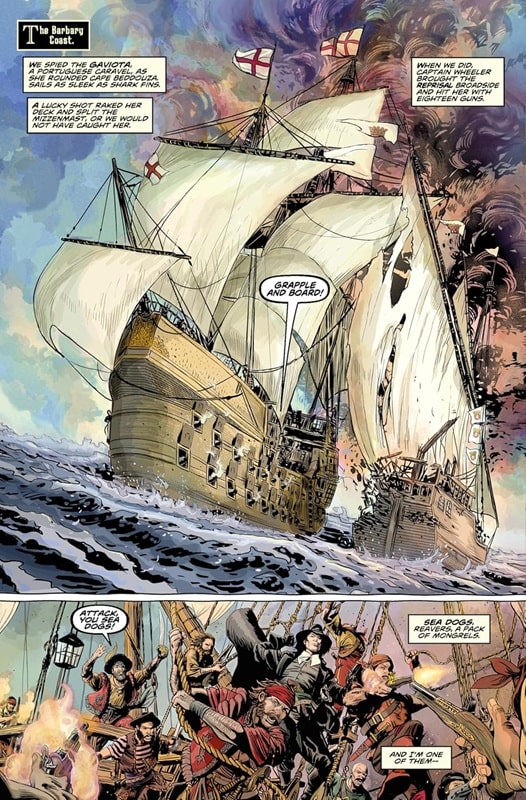
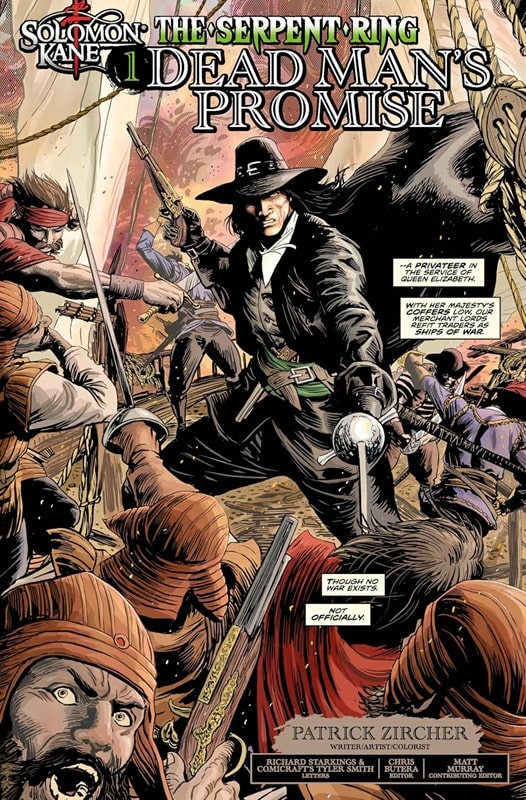
Interior art for Solomon Kane: The Serpent Ring #1 by Patrick Zircher
The first few pages of the comic are a prologue introducing some mysterious characters and incidents. We pick up with Solomon Kane three pages later, serving with a band of Queen Elizabeth’s privateers. Kane and his companions are in a pitched battle with the crew of a Spanish ship.
In an unfortunate occurrence Kane kills a passenger, ‘an innocent man,’ and makes a promise to the dying man to atone for his mistake. This sets the main plot in motion and Kane’s quest will take him from the Barbary Coast to Italy. On the way there will be swordfights, pistol battles, mysteries added to mysteries, and intimations of dark sorcery.
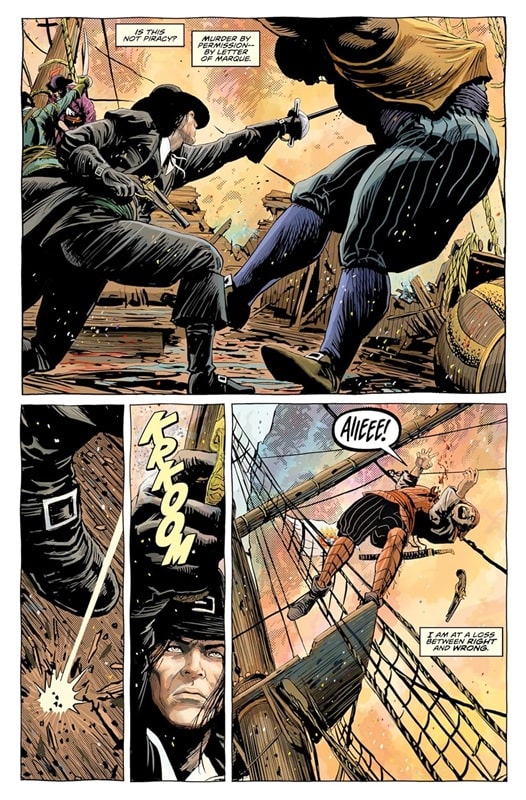
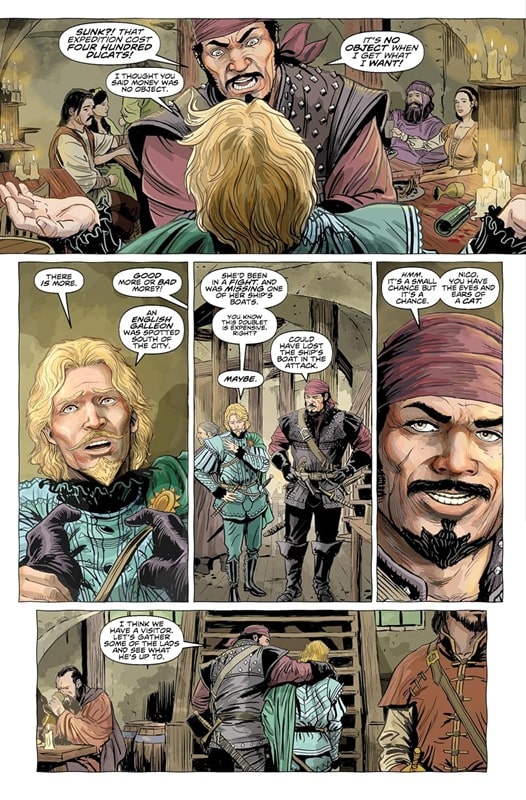
More interior art for Solomon Kane: The Serpent Ring #1 by Patrick Zircher
That’s all the plot I’ll give away, because you should read it for yourself, so let me talk a bit instead about Patrick Zircher’s work on the comic. Having spoken to Patrick online a good bit, I know this is one of his favorite comics he’s ever worked on. He’s a huge fan of Solomon Kane and it really comes through on the pages.
The story has an epic feel as it ranges around Europe, and a large cast of characters. All of that is well researched and beautifully illustrated, be it sailing ships or the streets of Napoli and Venice. Period costumes, weapons, and people are all extremely well done.

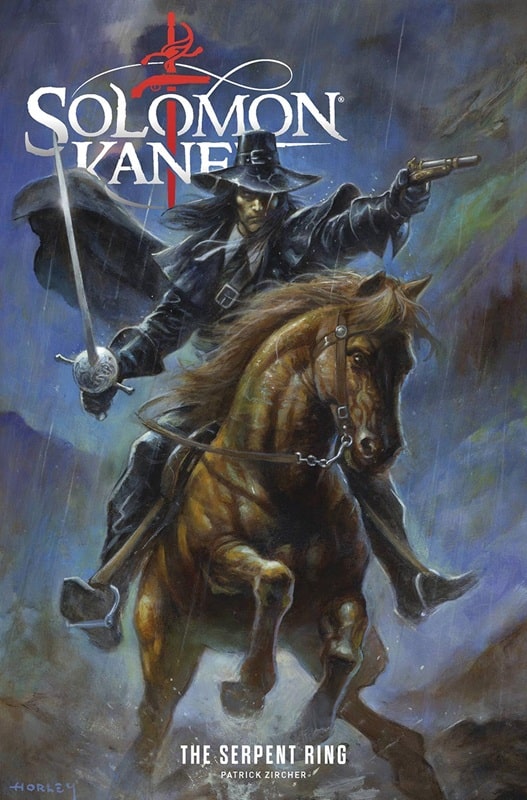
Issues #2 and #3 of Solomon Kane: The Serpent Ring. Covers by Rafael Kayanan and Alex Horley
For the Robert E. Howard fan this is prime stuff, Solomon Kane drawn and written by someone who loves the character and the world. It’s very much in the spirit of Howard’s work. I asked Patrick for a quote about his feelings working on the book and he said:
Solomon Kane embodies, in one character, what I love in stories. Action, adventure, suspense, horror, heroism, and wrestling with the ‘big questions’ of life.
Can’t ask for more than that.
Charles R. Rutledge lives in Atlanta, Georgia. This is his first article for Black Gate.
Women in SF&F Month: International Giveaway
I’m giving away one book of the winner’s choice for Women in SF&F Month today! Since there were some US-only giveaways earlier this month, this giveaway is for everyone else (though there are a few caveats given international shipping). Here’s how it works: You can choose your own adventure from the books/authors featured this month available on Kennys Bookshop, and I will ship the winner the book of their choice. This giveaway is open to anyone on the list of […]
The post Women in SF&F Month: International Giveaway first appeared on Fantasy Cafe.Teaser Tuesdays - A World Alone
Zombies! Very excited about diving into this one.
 THERE'S ONE IN THE HOUSE. The dragging thump of footsteps, somewhere downstairs, is what tips me off.
THERE'S ONE IN THE HOUSE. The dragging thump of footsteps, somewhere downstairs, is what tips me off.(page 1, A World Alone by R.K. Weir)
---------
Teaser Tuesdays is a weekly bookish meme, previously hosted by MizB of Should Be Reading. Anyone can play along! Just do the following: - Grab your current read - Open to a random page - Share two (2) “teaser” sentences from somewhere on that page BE CAREFUL NOT TO INCLUDE SPOILERS! (make sure that what you share doesn’t give too much away! You don’t want to ruin the book for others!) - Share the title & author, too, so that other TT participants can add the book to their TBR Lists if they like your teasers!
GUEST POST: What Fantasy Monsters Reveal about Our Deepest Fears by Caroline R.
 (Hyperion Japanese cover art)
(Hyperion Japanese cover art)Despite the genre’s escapist premise, fantasy literature often hosts cutting commentary on real-world issues. The monsters that terrorize these tales—from mythical beasts like the Kraken to the eerie walkers of today’s The Walking Dead—can symbolize humanity’s deepest fears and our most naked vulnerabilities. Through these creatures, fantasy stories have always held a mirror to the shifting anxieties of their eras. As an avid fantasy reader who worries constantly about our collective future, I’m interested in how fantasy monsters represent universal alarm—and how the stories that harbor these monsters continue to fulfill our ever-increasing need for escapist media.
The earliest mythical monsters in human history stemmed from the need to explain mysterious natural phenomena. The creatures of ancient myths often embody our most basic, physical fears: the violence other species, the destruction wrought by severe weather, humanity’s defenselessness against unthinking and uncontrollable natural forces. In ancient Greece, for instance, all meteorological occurrences—from prosperous harvests to devastating floods—were thought to be the direct result of godly intervention. The Greek gods were alternately merciless monsters and generous benefactors; they both caused and exacerbated humans’ powerlessness.
Some of the beings that populated classical myths were more straightforwardly monstrous, and these too represented fears inherent to human existence: the Minotaur, trapped in a labyrinth alone, represents the violent parts of human nature that emerge with isolation. The serpent-like hydra, with its multiple heads, could be said to embody chaos—the uncontrollable force of natural disasters, perhaps, or the seeming inevitability of war.
Many of these monsters can also be linked to moral and religious narratives. The Minotaur’s defeat by the hero Theseus could be said to symbolize the triumph of virtue over vice, a theme that appeared in ancient mythology and remains popular in fantasy literature today. The hydra, which is often associated with Ares, the god of war, sometimes represented punishment for moral failings, reminding us that ignoring religious or ethical obligations could trigger disastrous punishments. Thus, these early myths used monsters not only to explain the natural world, but also to prop up a moral framework.
 (THESEUS AND THE MINOTAUR by Barret Chapman)
(THESEUS AND THE MINOTAUR by Barret Chapman)As exploration and colonialism brought unfamiliar cultures into contact with each other for the first time, new fantasy monsters emerged to account for explorers’ fear of the unknown. Fantasy monsters developed during this era often symbolized the threats posed by unfamiliar territories, cultures, and species, embodying anxieties about difference. The Kraken of Nordic folklore offers an excellent example. A colossal, squid-like creature, the Kraken could pull down ships with its powerful tentacles. For European sailors during the Age of Exploration, the mythological Kraken symbolized the very real danger of the open sea.
Other fabled monsters were developed during this era to represent the indigenous peoples of colonized lands Ogres, cannibalistic giants, and other “savage” human-like creatures populated stories like The Travels of Sir John Mandeville, a fictional 14th-century travelogue that describes various monstrous beings believed to inhibit the New World. These "monstrous races”, which include “dog-headed Cynocephales” and “one-legged Sciapods”, mirrored appearance-based prejudices against native peoples.
Unlike the religious mythology of classical societies, stories that emerged during this era were more explicitly fictional. The fictional form gave writers license to exaggerate stereotypes that portrayed indigenous people as grotesque barbarians, reinforcing the fear and misunderstanding that often accompanied encounters between European explorers and native populations. This fear was not only of physical harm, but also of contamination wrought by cultural difference. Narratives of the time often portrayed European explorers or settlers as the heroic figures who, by defeating these monsters, demonstrated the superiority of their culture and values.
As we’ve seen, the development of fantastical monsters has always been rooted in real fears. This continues today, with fantastical monsters in literature reflecting the complex existential woes of modern people. As technology has advanced, social structures and global concerns have shifted, and so too have the monsters that embody these concerns. Now, many fantasy monsters represent common fears of environmental degradation, political collapse, and social injustice.

One compelling example of this is Blood Over Bright Haven by M.L. Wang. The story’s villain—who I won’t reveal, since you should read the book yourself—causes the protagonist to wonder whether she can trust anyone. The villain’s conniving manipulation, and the unjust magical system of the setting, both parallel modern distrust in authority and misuse of power.
In many modern fantasy narratives, the villains represent worst-case scenarios that humanity dreads: unchecked corruption (represented by the Darkling from Shadow and Bone), fear of being forgotten (represented by the veil in The Invisible Life of Addie LaRue) and the devastation wrought by modern warfare (represented by the tyrants in The Poppy War). These creatures mirror real-world fears and anxieties, but the narratives where they appear often provide a kind of hope—usually, despite the worst, the protagonists of these stories emerge victorious and some form of justice is served.
Those happy endings are what allow modern fantasy to maintain its escapist allure, even when it contains allusions to very real social ills. Generally, fantasy books and series end with something of a happy conclusion: the protagonist tends to vanquish the monster; the world tends to return to some semblance of order; the villains tend to end up dead or exiled. In a world where these just endings are so rare, reading fantasy allows us to indulge in satisfying depictions of the justice we don’t see in real life.
Thus, fantasy’s use of realistic monsters does not betray its escapist properties, but bolsters them. It wouldn’t be interesting to read about a world in which everything is perfect all the time, but it can be exciting and validating to read about a world in which grit and determination can lead to meaningful social change.
The journey from ancient myth to modern fantasy reflects a shift in our relationship to reality. In early mythologies, monsters were believed to be real, physical embodiment of the unknown and unexplainable forces of nature. They were creatures to be respected and feared, forcing humans to recognize the limits of their knowledge and physical ability. As our understanding of the world expanded, these monsters were gradually relegated to the realm of fiction, appearing in explicitly fictional narratives that allowed us to confront our fears from a safer distance. While most people no longer believe in dragons or sea monster, their symbolic power hasn’t been diminished.
The monsters that populate fantasy literature have always been imaginative and otherworldly, but their significance goes far beyond simple escapism or entertainment. Through these creatures, and the characters’ reactions to their violence, fantasy can often elucidate something insightful about the real world. From the ancient monsters that represented natural threats to the modern creatures that reflect existential dread, fantastical villains can all teach us something about the most profound aspect of the human condition. They give voice to the darkness within and without, reflecting both evolving external threats and timeless internal struggles.
But, despite the terrifying nature of these creatures, the genre itself remains fundamentally optimistic, offering visions of triumph against every kind of evil. While the real world often feals messy and unjust, these stories offer a reassuring sense of order. Many of us feel powerless to confront the monsters we encounter every day—the dangers of unchecked authority, the collapse of social systems, and the degradation of the environment, to name a few—but fantasy provides a safe space to confront these fears.
At their core, fantasy monsters aren’t just symbols of our fears—they’re also reflections of the human condition. They show us the darkness we often try to ignore, but also offer hope that, despite our vulnerabilities and flaws, we can overcome existential challenges. By confronting these monsters in stories led by fearless protagonists, we learn more about our own fears—and how we can rise above them.

Author bio: Caroline is a writer for Reedsy and NowNovel who covers everything from the nitty-gritty of the writing process to the business of finding ghostwriting jobs. When she isn’t writing, Caroline loves reading indie books and spending time outdoors.
Book review: When the Moon Hits Your Eye by John Scalzi

Book links:
ABOUT THE AUTHOR:
Publisher: Length: Formats:
The moon turns into cheese. Not metaphorically. Not in a dream. Like, literally. One day it’s the regular rock-ball we all know and ignore, and the next, it’s dairy. That’s the book. That’s the premise. I rolled my eyes too. But then I started reading, and - well, I ended up liking it more than I thought I would. More than I probably should’ve, honestly.
This is John Scalzi doing what he does best - taking a totally absurd idea and running with it. The moon becomes cheese (type undetermined). People react. Some panic, some scheme, some try to monetize it, some go to church. And through it all, Scalzi’s trademark mix of snark, satire, and sneaky emotional depth holds the whole gooey mess together.
There’s not really a central protagonist here-unless you count humanity in general, or maybe capitalism. Instead, we bounce around between a rotating cast of scientists, astronauts, cheese mongers, billionaire tech bros, diner regulars, and one very cursed Saturday Night Live episode. It's like a disaster movie crossed with a sociology paper, but funnier and with more dairy puns.
The plot meander a a bit and I admit I did I lose track of a few characters. But the short chapters kept things moving, and there’s something irresistible about how this book doesn’t try to be anything other than what it is: a ridiculous thought experiment with a surprising amount of insights into human behavior.
If you’ve read Kaiju Preservation Society or Starter Villain and enjoyed the vibes, you’ll probably enjoy this one too. If you haven’t, but the idea of “slice-of-life apocalypse, but make it cheese” sounds appealing, you might be in for a good time. Just don’t come in expecting hard sci-fi. This is soft cheese fiction. And that’s kind of the point.

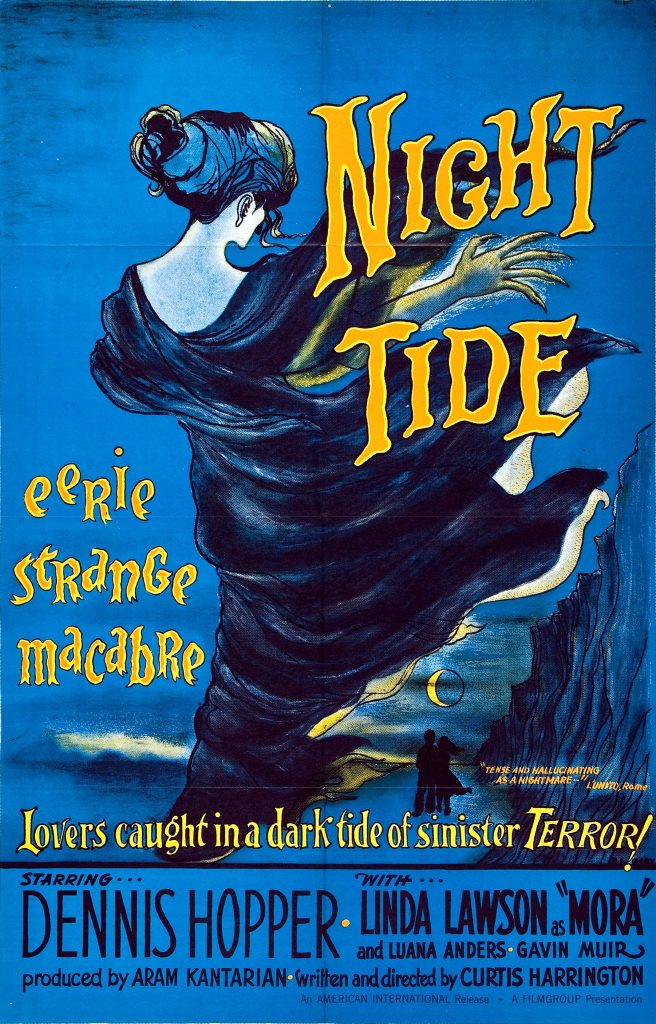

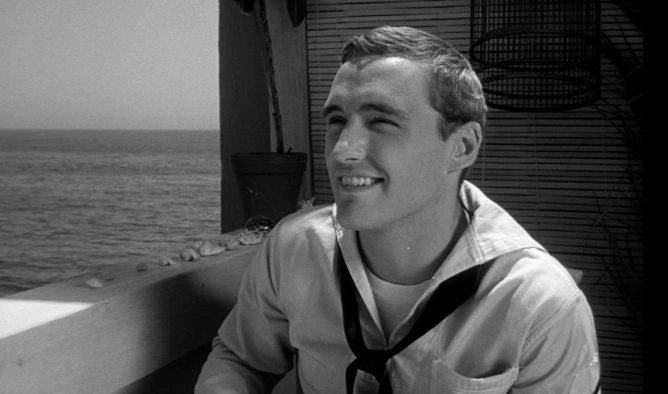
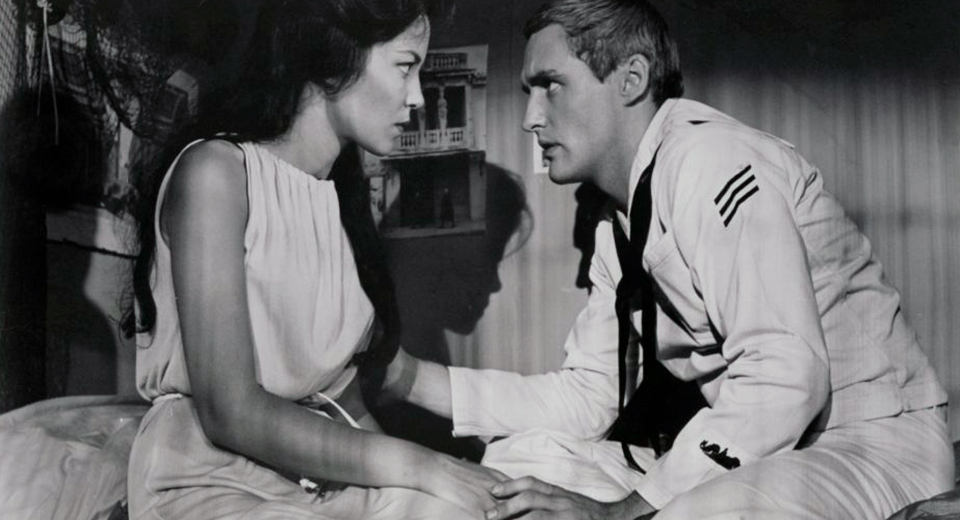
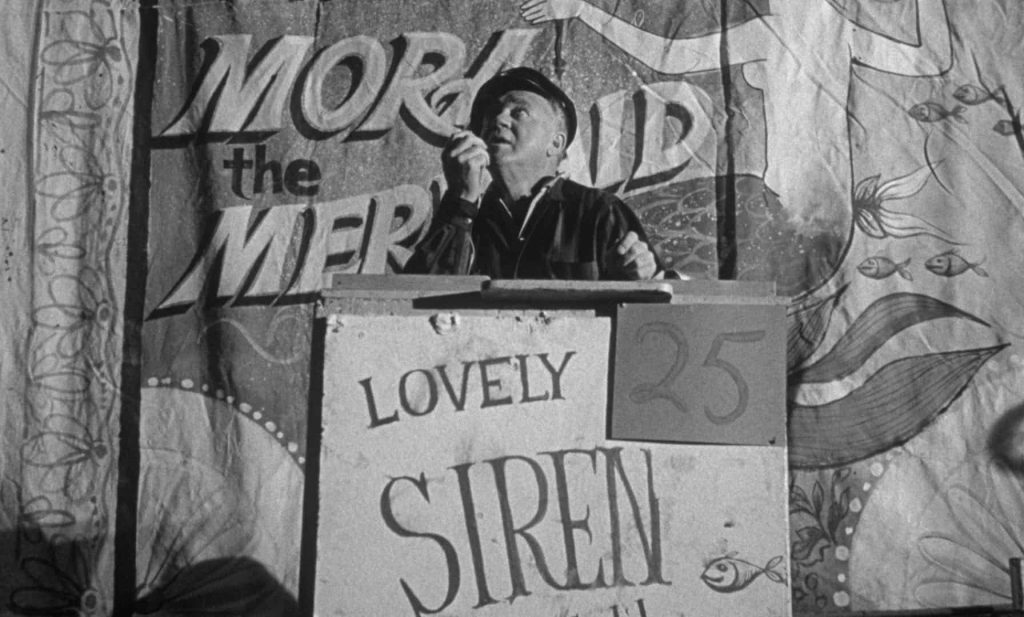

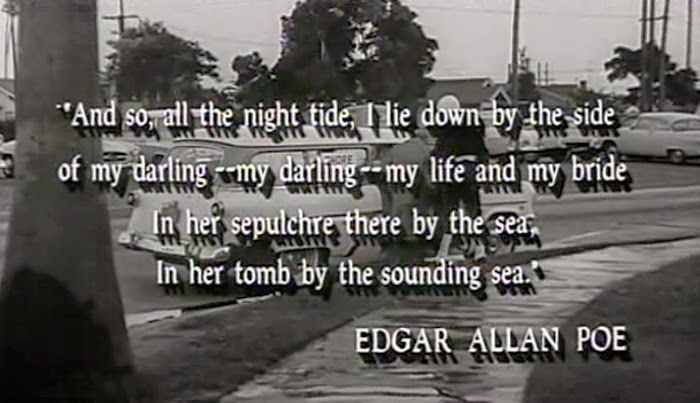
Recent comments